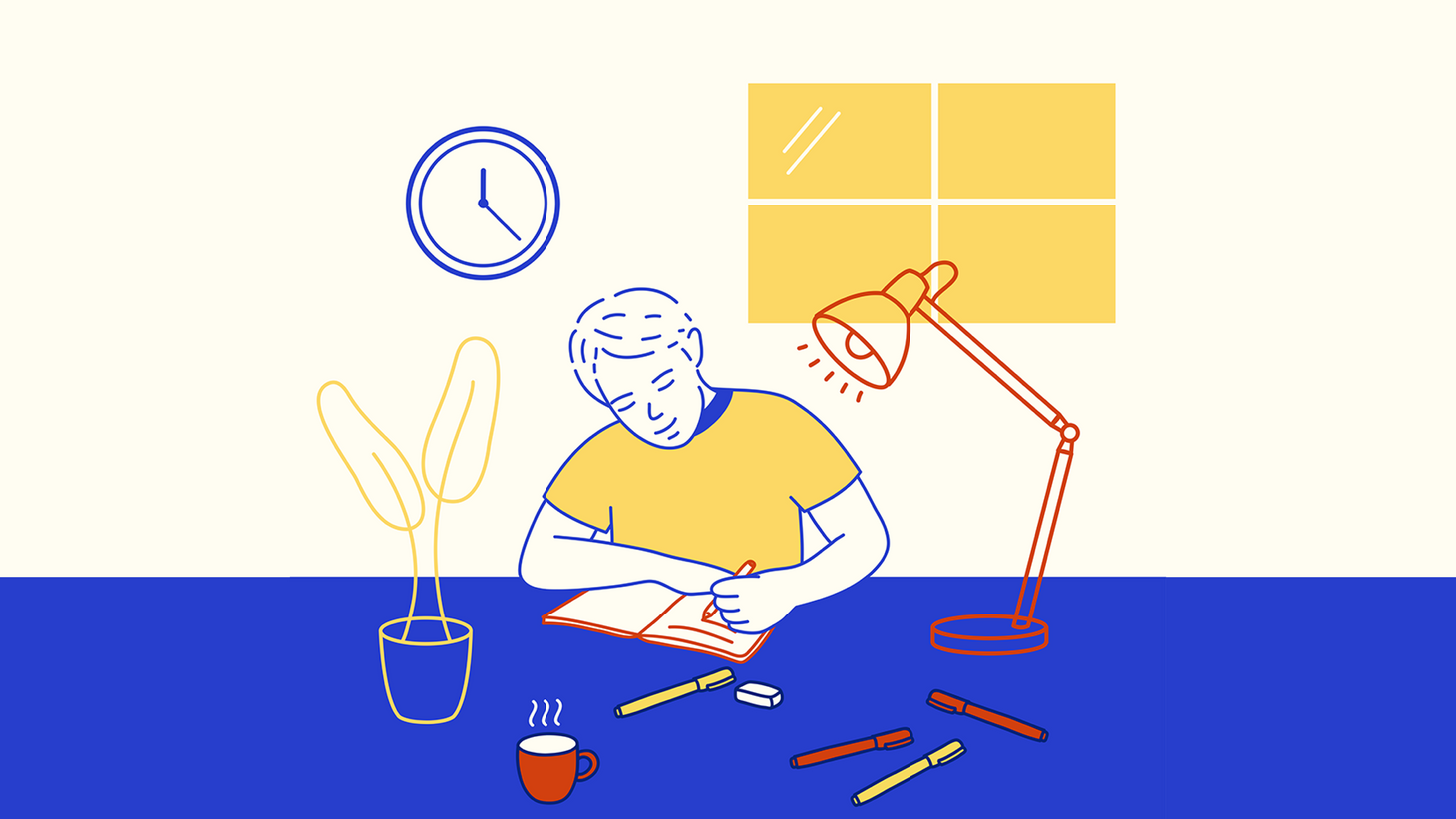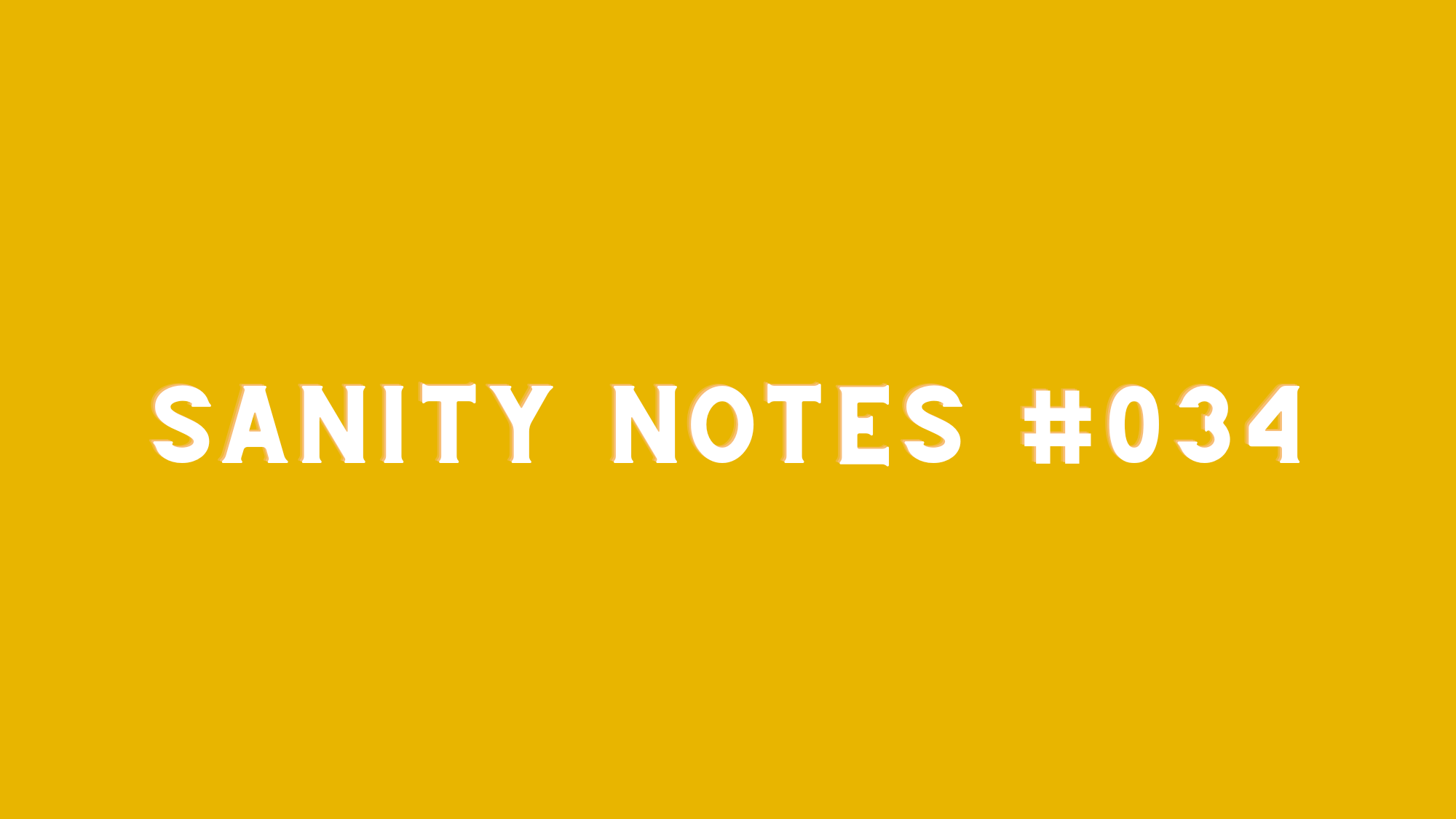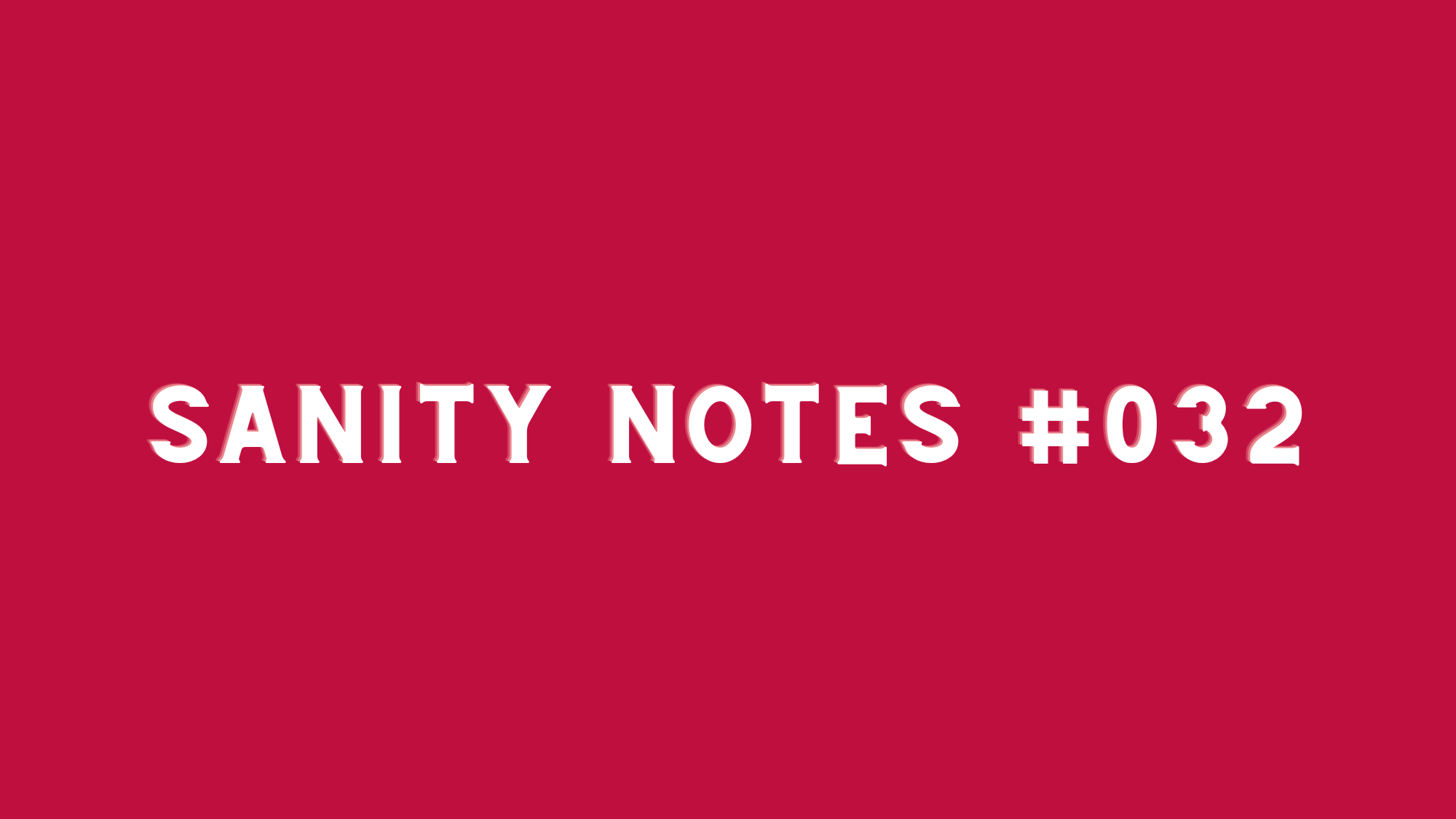A powerful morning practice for imperfect leaders
In 2014, I was facing the loss of a child, a messy divorce, and single-parenthood while leading a fast-growing company. This is the morning routine that helped get me through. It has served me to this day.

In 2014, I found myself going through a time of tremendous change and stress. I was the CEO of a company that had recently raised our Series A. We had ambitious plans for the year, and I needed to show up with a clear head for the work at hand.
But at home, I was facing the loss of a child, a complicated divorce, and my first few months as a single-parent.
Life was overwhelming to say the least.
Up until that point, I was not particularly intentional about my mornings. I might wake up, check email, hit the gym (maybe), then head to the office.
With the challenges I was facing that year, I realized I was going to need to get a lot more intentional about preparing myself for the day.
The morning routine I crafted that year has served me well ever since.
In my coaching work, I have been surprised to find how few leaders have an intentional approach to their morning and their day. As a result, we often explore these themes in coaching sessions as a part of a broader theme of how we bring support around the leader in her leadership role and in her life.
I decided it might be worth sharing my own routine here as well as the logic that went into it and the results I have experienced over the years.
Here is my morning routine followed by some detailed reflections:
- Meditation (10 minutes)
- The worry board (2 minutes)
- The gratitude board (3 minutes)
- Intention journaling (10 minutes)
- Exercise (30-60 minutes)
Total time: ~ 1 - 1.5 hours
A bit about the individual pieces:
1. Meditation
Meditation has been big for me. I have struggled with depression since my teenage years, and I have found meditation to be the single most powerful antidote to allowing depression to drag my whole day down.
When I first began exploration meditation, I assumed like most do that it was about quieting my brain and finding some elusive state of bliss.
Over time, I have learned that meditation is more about:
- Separating my sense of self from my thoughts and feelings
- Finding some space between stimuli and response
Both of these results are gifts on the hard days.
Knowing there is a me here who is not my thoughts and feelings allows me to witness my moods like I might witness the weather.
I do not get mad at myself when it is raining outside. Why then would I get frustrated with myself when I am having a depressive or anxious day?
That is just the way my internal weather is showing up that day.
Meditation helps me to note the moods or thought I am having and see that I am ok apart from that mood or thought.
This noting helps to create the separation I mentioned above between stimulus and response.
As children, we have no separation. Something happens to us or around us and we immediately burst into tears (or shout, or smile.) As adults, our brains are more developed (specifically our prefrontal cortex), and we have the opportunity to begin to seek some space between an event and our chosen reaction.
As a coach, I often witness leaders who are enslaved to their moods and to the swings of their companies. When they feel motivated, they judge themselves as good. When they feel anxious or sad, they believe they must get themselves out of the mood or they are failing.
Similarly, they find their moods deeply tied to the recent performance of the business. Or they find their sense of well-being quickly damaged by unexpected negative news or challenges.
Meditation offers some space here. And such space is a prerequisite of great leadership.
I have found guided meditation from services like Headspace and Waking Up to be helpful, but sitting in silence for 10-minutes and simply paying attention to the feeling of your breath is a great place to start.
2. The worry board
After I have completed a short meditation, I open up what I call my Worry Board. This is goofy but I promise extremely helpful.
There is quite a bit of data out there that shows if we schedule time to worry then our brain will actually be less anxious the remainder of the day. It is almost as if our brain thinks "Oh, I don't need to worry about this now; there's time on the calendar to worry later."
A 2006 study found that participants who were encouraged to postpone their worry to a certain window in the day experienced less worry and fewer psychosomatic results of worry.
I read that study in 2014 and began setting aside a few minutes each morning to worry. I would simply write down in my journal the things that were causing me anxiety that morning.
As I began this effort, I realized something that prompted me to refine the worrying time.
What I realized was that big worries and small worries, and worries of all different stripes, were taking up the same kind of space in my head.
In other words, whether a parent had a health scare or I had a minor issue facing me at the office that day, I simply felt worried.
This observation caused me to begin to categorize my worries each morning. And that effort proved extremely helpful.
I started to use a Trello board (you can do this on paper if you prefer) to bucket my worries into the following categories from most minor to most sever:
- Quick fix (things that were annoying me but which I new with a bit of effort would be quickly resolved)
- Everyday work (stuff that's just part of the job - I found most of my worries went here)
- Personal financial issue (money stuff; I intentionally put this closer to the minor side to remind myself that the items below were a much bigger deal)
- Relationships (worries about my connection with other people in my life; if life is about connection and love then these things deserve real attention)
- Health of self or loved one (the big stuff)
- Significant loss or death (the biggest stuff)
Then I added two columns at the end:
- Resolved (I would move items here when I fixed them)
- Deemed not important (I would move items here which weren't fixed per se but which I realized were not important after all)
Categorizing my worries really helped me. It allowed me to put small worries in their place.
When I have big worries on the board, like when a loved one has a health issue, it allows me to actually note for myself:
Wow, I have something really big going on right now.
That noting allows me to provide myself some space and grace on the hard days.
As I add items to the board, I will often add a brief note to myself (sometime like 'You got this, you have been through this kind of issue many times before.') Or maybe a note on how I plan to resolve the issue at hand.
Moving items to Resolved or Deemed not important has also really served me over time.
Seeing a long list of resolved items reminds me that I have faced many many challenges in the last few years since I started this exercise.
This knowledge bolsters me on the hard days.
Seeing the long list of items deemed not important is also super helpful. It reminds me that most of the anxieties that weigh me down on a given day end up being not all that important in long run.
3. The gratitude board
With some dedicated worry time out of the way, I find it helpful to turn next to gratitude.
I actually use a second Trello board for this, but you can obviously use whatever medium is most helpful to you.
I like to divide major areas of my self or my life into columns. At the moment, the columns on my board read:
- Adventurer
- Learner
- Husband
- Papa
- Friend
- Athlete
- Artist
- Coach
- Entrepreneur
Under each column, I add a card for something in that area that I am really grateful for.
Just seeing the different columns reminds me each morning of the many parts of my self and of my life.
When I was going through my darkest days in 2014, I found it helpful to ground myself in the knowledge that the loss I was feeling around my child, for example, impacted a part of my life.
The Papa part of my life was in tatters.
But there were other parts of my life, even then, that were healthy and thriving.
That realization was life-giving.
I was not hiding the hard parts. I was acknowledging those and holding space for them. But I was also inviting myself to hold them in context of my broader life.
Taking time each morning to slowly read through the items under each heading helps to broaden my awareness to my full life experience.
I may be facing a difficulty in one area, at work for example, but if I zoom out I am able to put that difficulty in the context of my life's bigger story.
For me, that has been a big fucking deal.
This practice also helps me to pick my head up for the day and ensure that each of the major areas of my life are getting attention.
I am reminded, for example, that I am not only a father and an entrepreneur (two very consuming roles). I am also, for example, an artist.
This reminder encourages me to hold some space in my day to write or to pick up my guitar.
Holding space for each of the major areas of my life is buoying when one of the areas feels like it is burning to the ground.
4. Journaling
After grounding myself in a broader view of my life through a review of my gratitude board, I open my journal.
In my teenage years, I was prone to long, wandering journal entries. Part of me wishes I had a practice like that now, but I do not.
What has been most effective for me as a working adult is the Five Minute Journal format:
- 3 things I am grateful for this morning
- 3 things that would make today a great day
- 1 self-proclamation (usually one 'I Am' statement that is something I would like to be. Such as 'I am grounded and present' or 'I am closely connected to the people I love.')
In the evening, or the following morning, I will add:
-3 things that made today great
-1 thing that would have made today better
There is a lot of supportive science around this approach. Each of these items contribute to training our minds to look for and celebrate the positive:
- identifying items of gratitude
- looking ahead to the day to identify great things
- reflecting back to pull themes from the day that were positive
As entrepreneurs, we are prone to ride the positive and negative waves of our companies. But that wave riding inhibits the quality we need most to succeed in our leadership roles: resiliency.
Retraining our brains to clue in on the positive helps build resiliency and keep is buoyant on the hard days.
One of my superpowers as a founder is my ability to drive a product and company toward excellence. I can do this because I can zoom in quickly on any area of imperfection. At times, I find I am even able to see around corners to the improvements that will be required to ensure future success. That is a superpower, and one that I see often in founders I coach.
It can also be my kryptonite.
Spending my days steeped in what needs improving can eviscerate my inspiration.
Leaders and teams run on inspiration.
Holding space in the morning and evening to plan for and celebrate the positive in the day has been a powerful counter-balance to some of my natural perfectionist tendencies.
Journaling also keeps me honest. It allows me to look back over years and realize how far I have come.
I tend to be my own harshest critic. Terribly mean in fact.
Journaling allows me to zoom out, look back, and see the growth that has taken place in my life.
5. Exercise
The last critical piece of my morning routine is exercise.
A lot has been written about the benefits of morning exercise so I will be brief here. And specific.
In my early twenties, I ran. Running cleared my head but left me weak.
Then came 8 years for Crossfit. Crossfit made me strong and was a brilliant outlet for my anxieties. You must be in the present moment when lifting big weights to exhaustion. But Crossfit beat up my body and proved unsustainable.
I now practice Olympic weightlifting and the Happy Body regimen. I love this practice because it makes my body both strong and flexible. It also builds over time. The focus is not on getting into perfect shape in 90 days. The focus is on being better this month than last...for the rest of life.
I now train my body in the same way that I desire to build my businesses and my life.
When I build a business, I want to build a business that is better, stronger, more capable, and more resilient this year than it was last year.
And I want to help my clients do the same.
I want to build a life for myself that is richer, fuller, healthier, more impactful, and more me this year than it was last year.
And I want to help my clients do the same.
Closing thoughts
This practice does not take away all my worries. Nor does it make every day blissful. But it does help to ground me in the hardest days.
It creates space.
It makes me 20% clearer. And that 20% is a big deal.
The particulars of your most supportive morning will be unique to you. I think most of the power is in the intention and the repetition.
The change comes from training our minds and our bodies that there will be a predictable time in our day when we will receive attention from ourselves, where we can share our worries and hopes openly, and where we can find a buffer from the imposition of the busy, consuming world.
I would invite you to play with whatever routine works for you. And I would love to hear what you discover along the way!
Wherever you are in your life today, wishing you peace and support.
-Matt
Sanity Notes Newsletter
Join the newsletter to receive semi-weekly updates in your inbox.


